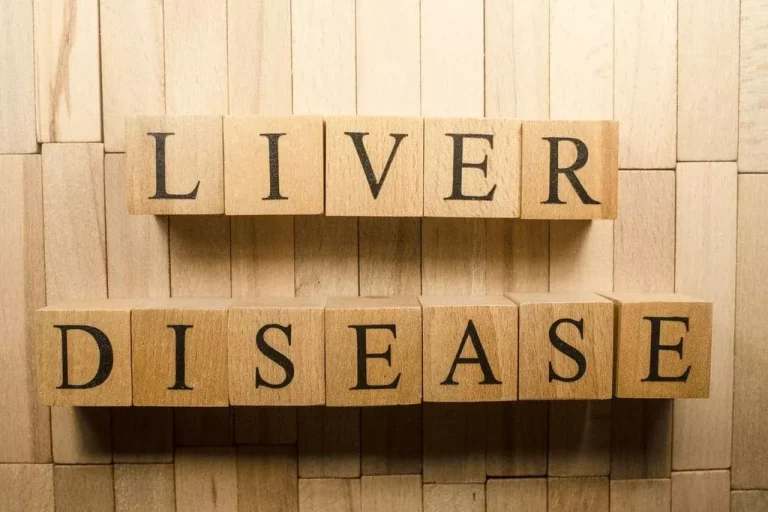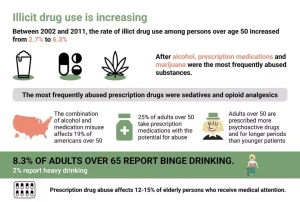Treatment for Alcohol Problems: Finding and Getting Help National Institute on Alcohol Abuse and Alcoholism NIAAA

Group meetings are available in most communities at low or no cost, and at convenient times and locations—including an increasing presence online. This means they can be especially helpful to individuals at risk for relapse to drinking. Combined with medications and behavioral treatment provided by health care professionals, mutual-support groups can offer a valuable added layer of support. If you feel that you sometimes drink too much alcohol, or your drinking is causing problems, or if your family is concerned about your drinking, talk with your health care provider. Other ways to get help include talking with a mental health professional or seeking help from a support group such as Alcoholics Anonymous or a similar type of self-help group.
Common signs and symptoms include:
- Although we tend to think of alcohol as reducing anxiety, it doesn’t do so uniformly.
- Part of this confusion is that many individuals are unclear about the differences between social drinkers, problem drinkers, and alcoholics.
- If your pattern of drinking results in repeated significant distress and problems functioning in your daily life, you likely have alcohol use disorder.
- The cognitive revolution that swept across psychology in the 1970s had begun to influence psychopathology research, including addiction (see Sayette, 1999b; Tiffany, 1991; Wilson, 1987a).
- Interestingly, when higher doses of alcohol were used than in the original Wilson and Abrams (1977; Abrams & Wilson, 1979) studies, their findings suggested a primarily pharmacological effect on stress response dampening4 (see also Donohue, Curtin, Patrick, & Lang, 2007).
- Studying the effects of alcohol on emotion seems like a straightforward endeavor, as nearly everyone appears to believe that we drink to feel better.
- Their studies introduced cognitive and social factors to the study of alcohol and emotion, and added nuance to our understanding of alcohol’s effects.
For more information on a return to drinking, see An Ongoing Process. Evaluate the coverage in your health insurance plan to determine how much of the costs your insurance will cover and how much you will have to pay. Ask different programs if they offer sliding-scale fees—some programs may offer lower prices or payment plans for individuals without health insurance. Overall, gather as much information as you can about a program or provider before making a decision on treatment. If you know someone who has firsthand knowledge of a program, it may help to ask about their personal experience.
What to eat if you discover you’re prediabetic
Treatment can be outpatient and/or inpatient and be provided by specialty programs, therapists, and health care providers. Clearly additional studies conducted across laboratories are needed to replicate and expand the group formation project findings discussed here. Research in which participants receive different beverages (e.g., alcohol, placebo, control) within https://ecosoberhouse.com/ a single group would evaluate critical questions regarding the match between an individual and the rest of his/her group regarding perceived intoxication (Sayette et al., 2016). Disentangling intoxication effects between actors and partners is not merely an academic exercise; such beverage mismatches also occur outside the lab (e.g., designated drivers at parties).
- A meta-analytic review documenting links between adolescent/young adult solitary drinking and negative psychosocial problems, drinking to cope motives, and increased alcohol use and problems.
- Setbacks can be common, so you will want to know how they are addressed.
- Couples and family counseling incorporates spouses and other family members in the treatment process and can play an important role in repairing and improving family relationships.
- Binge drinking can lead to reckless behavior such as violence, having unprotected sex, and driving under the influence.
- Naltrexone is an opioid antagonist which blocks the dopamine reward you get from alcohol.
- The counselor provides information about the individual’s drinking pattern and potential risks.
- Because it requires at least a bottle of wine to unlock that cave (a quantity that has crept upwards over the years); anything less felt akin to having an itchy nose but not quite being able to follow through on a sneeze.
Alcohol use disorder

Individual differences in the socially reinforcing effects of alcohol also may relate to genetic makeup, and testing alcohol’s effects in a social context may be a powerful approach to uncover genetic vulnerability to alcoholism (Fromme et al., 2004; Volkow & Li, 2004). The group formation project also permitted examination of genetic moderators on alcohol’s effects in a social context. Creswell et al. (2012) evaluated an often studied polymorphism in behavioral genetics, consisting of a Variable Number of Tandem Repeats (VNTR) in exon 3 of the gene encoding the dopamine D4 receptor (DRD4). The DRD4 genotype pertains to gene × environment interactions involving alcohol-related traits (Larsen et al., 2010). For instance, Park, Sher, Todorov, and Heath (2011) found college/Greek involvement to predict increased risk of alcohol dependence, but only among students with at least one copy of the 7-repeat allele. This research raises questions regarding the mechanisms by which social factors increase risk for problematic drinking among 7-repeat carriers (Park et al., 2011; see also; Mrug & Windle, 2014).

We focused on extraversion, a trait that has attracted considerable attention and is intuitively linked to social environments. Persons high on extraversion were especially sensitive to alcohol’s effects on reported mood and social bonding. Moreover, analyses focusing on Duchenne smiling of group members indicated that social processes uniquely accounted for alcohol reward-sensitivity among individuals high in extraversion. Results suggest that alcohol-related reward may be explained by social processes among extraverted drinkers. This pattern points to new directions for understanding the factors that both mediate and moderate the impact of alcohol on emotion in social settings.
Negative correlates of solitary drinking

Despite the importance of contextual variables in the study of individual differences (Sher & Wood, 2005), though, lab research testing the moderating role of personality on alcohol’s reinforcing effects until recently has not been conducted in group settings. The inclusion of a social context when studying the emotional effects of alcohol makes particular sense when one realizes that since the mid-1970s, the vast majority of participants recruited for alcohol administration studies are social drinkers who report rarely drinking alone. Surprisingly, however, these social drinking participants often find themselves drinking in isolation in the laboratory (Fairbairn & Sayette, 2014). In a study that should have done more to reposition the field, Pliner and Cappell (1974) contrasted the effects of alcohol while consumed alone to those observed while in groups. Participants drinking in groups reported and displayed changes that were primarily emotional (e.g., feeling less unhappy), while those consuming alcohol in isolation reported primarily physiological changes (e.g., feeling dizzier).

1In addition to his research on social anxiety, Wilson also investigated the impact of alcohol on sexual arousal (e.g., Wilson, 1981). Wilson was instrumental in introducing novel conceptual and methodological approaches to reconsidering social drinking and drinking problem the TRT. Chief among these insights were the need for methodological rigor (with particular focus on the assessment of anxiety), the importance of context, and the value of incorporating cognitive psychological factors.
Stress Management
- To learn more about alcohol treatment options and search for quality care near you, please visit the NIAAA Alcohol Treatment Navigator.
- Fairbairn et al. (2015a; b) argued that gender differences are most likely to arise when alcohol studies include a social context.
- It is important that as you try to help your loved one, you also find a way to take care of yourself.
- Nonetheless, drinking steadily ticked back up, hitting pre-Prohibition levels in the early ’70s, then surging past them.
- It may also be helpful to determine whether the treatment will be adapted to meet changing needs as they arise.
- This model proposes that alcohol creates a myopic focus on the present moment, thereby limiting the degree to which present experiences are influenced by emotions derived from prior experience (Fairbairn & Sayette, 2013).
In the UK, naltrexone is tricky for GPs to prescribe thanks to licensing. For reasons too convoluted to go into, it is approved only for gambling addiction. To address alcohol dependence, it has to be prescribed by the NHS “off label”, which GPs are penalised for because there’s such a limited budget for it. Expose your teen to healthy hobbies and activities, such as team sports, Scouts, and after-school clubs. Discovering your child is drinking can generate fear, confusion, and anger in parents.

- Despite the promise of this approach the research thus far offers inconsistent evidence regarding the relation between personality traits and the reinforcing effects of alcohol (Sher & Wood, 2005).
- This pattern points to new directions for understanding the factors that both mediate and moderate the impact of alcohol on emotion in social settings.
- In sum, when studied in a social context alcohol appears to enhance social bonding.
- Each of these recovery programs has members who are HFAs as well as lower functioning alcoholics.
- Until then, patients will have to go private if they want access to naltrexone.
